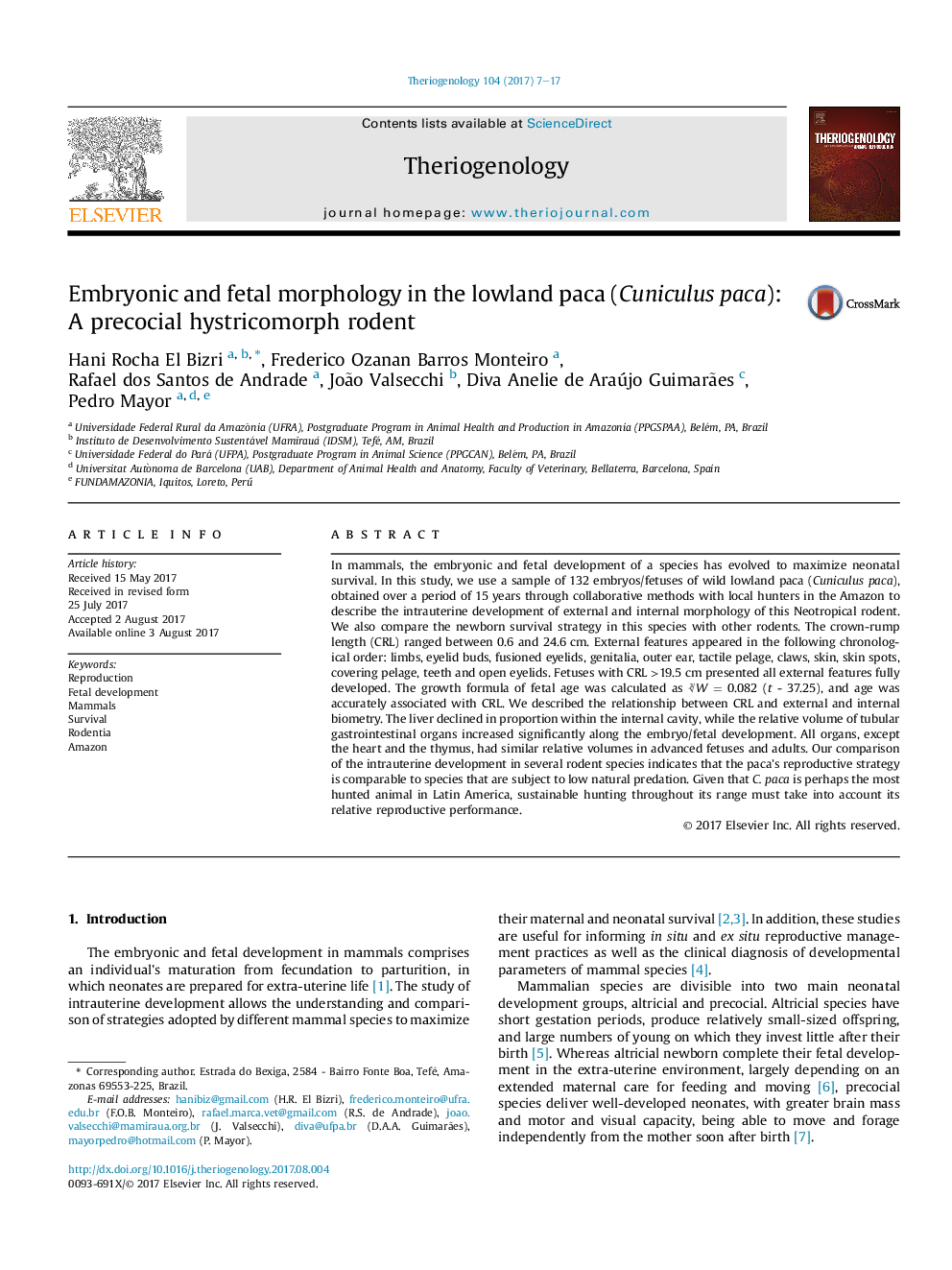| Article ID | Journal | Published Year | Pages | File Type |
|---|---|---|---|---|
| 5522980 | Theriogenology | 2017 | 11 Pages |
â¢All external characteristics in paca fetuses of >22.0 cm were fully developed.â¢The growth formula of fetal age for the species was âW = 0.082 (t - 37.25).â¢Most visceral organs of larger fetuses had relative volumes similar to adults.â¢Rodent fetal development is explained by the relative litter biomass per pregnancy.â¢Paca's reproductive strategy is not adapted to high hunting pressure.
In mammals, the embryonic and fetal development of a species has evolved to maximize neonatal survival. In this study, we use a sample of 132 embryos/fetuses of wild lowland paca (Cuniculus paca), obtained over a period of 15 years through collaborative methods with local hunters in the Amazon to describe the intrauterine development of external and internal morphology of this Neotropical rodent. We also compare the newborn survival strategy in this species with other rodents. The crown-rump length (CRL) ranged between 0.6 and 24.6 cm. External features appeared in the following chronological order: limbs, eyelid buds, fusioned eyelids, genitalia, outer ear, tactile pelage, claws, skin, skin spots, covering pelage, teeth and open eyelids. Fetuses with CRL >19.5 cm presented all external features fully developed. The growth formula of fetal age was calculated as âW = 0.082 (t - 37.25), and age was accurately associated with CRL. We described the relationship between CRL and external and internal biometry. The liver declined in proportion within the internal cavity, while the relative volume of tubular gastrointestinal organs increased significantly along the embryo/fetal development. All organs, except the heart and the thymus, had similar relative volumes in advanced fetuses and adults. Our comparison of the intrauterine development in several rodent species indicates that the paca's reproductive strategy is comparable to species that are subject to low natural predation. Given that C. paca is perhaps the most hunted animal in Latin America, sustainable hunting throughout its range must take into account its relative reproductive performance.
